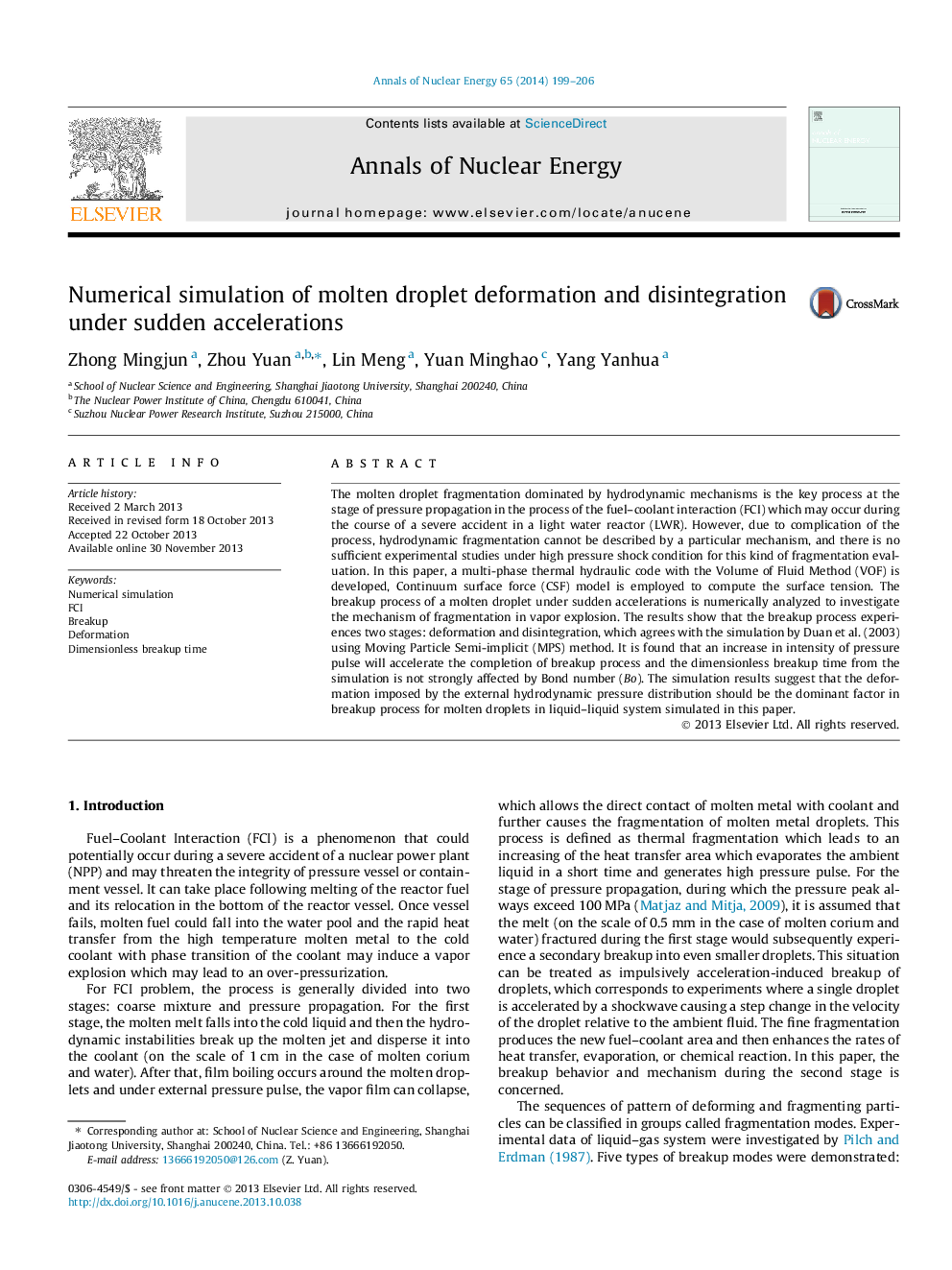| Article ID | Journal | Published Year | Pages | File Type |
|---|---|---|---|---|
| 1728417 | Annals of Nuclear Energy | 2014 | 8 Pages |
•A multi-phase thermal hydraulic code with the volume of fluid method is developed.•The breakup process of a molten drop under sudden accelerations is simulated.•Evolution of breakup process is numerically simulated and analyzed.•The dimensionless breakup time is not affected by Bond number strongly.•The droplet deformation should be a dominant factor in the simulated fragmentation.
The molten droplet fragmentation dominated by hydrodynamic mechanisms is the key process at the stage of pressure propagation in the process of the fuel–coolant interaction (FCI) which may occur during the course of a severe accident in a light water reactor (LWR). However, due to complication of the process, hydrodynamic fragmentation cannot be described by a particular mechanism, and there is no sufficient experimental studies under high pressure shock condition for this kind of fragmentation evaluation. In this paper, a multi-phase thermal hydraulic code with the Volume of Fluid Method (VOF) is developed, Continuum surface force (CSF) model is employed to compute the surface tension. The breakup process of a molten droplet under sudden accelerations is numerically analyzed to investigate the mechanism of fragmentation in vapor explosion. The results show that the breakup process experiences two stages: deformation and disintegration, which agrees with the simulation by Duan et al. (2003) using Moving Particle Semi-implicit (MPS) method. It is found that an increase in intensity of pressure pulse will accelerate the completion of breakup process and the dimensionless breakup time from the simulation is not strongly affected by Bond number (Bo). The simulation results suggest that the deformation imposed by the external hydrodynamic pressure distribution should be the dominant factor in breakup process for molten droplets in liquid–liquid system simulated in this paper.
